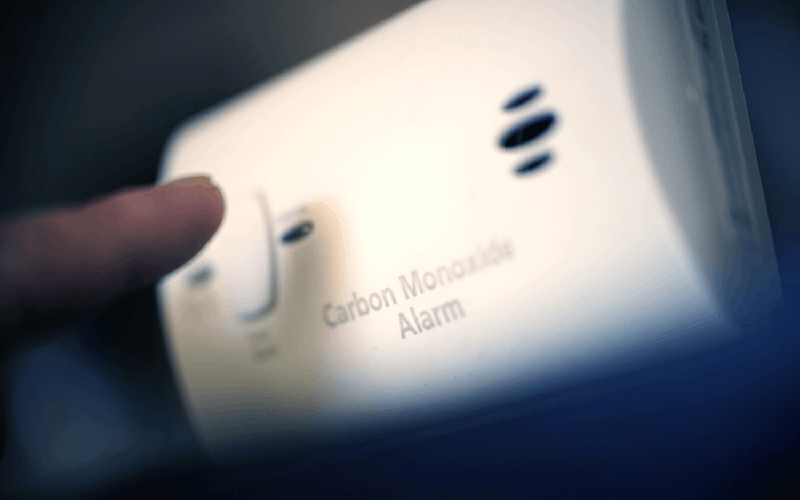Though often associated with wintertime heating issues, carbon monoxide (CO) can find its way into your Baltimore, MD, home in any season. This colorless, tasteless, and odorless gas is potentially lethal, but carbon monoxide detectors are the first line of defense against a variety of hazards.
Carbon Monoxide Sources Inside Your Home
Because it’s a primary byproduct of the combustion process, nearly every home faces some risk of carbon monoxide exposure. This threat comes in many forms, but the most common include:
- Malfunctioning gas appliances–Any gas-burning appliance can emit CO if it’s not getting the correct gas-to-air ratio. The best way to check is to look at the color of the flame. If it’s mostly yellow, turn the appliance off promptly and contact a local professional to schedule repairs.
- Air leaks–Leaky air ducts can pull carbon monoxide into your home from vented gas appliances like dryers, water heaters, and furnaces. Ensuring they’re properly sealed reduces CO exposure risk while improving energy efficiency.
- Lack of indoor ventilation–Homes that are airtight may be more efficient, but they can also allow harmful gases to accumulate. Modern ventilation systems are designed to provide a steady flow of fresh air without wasting energy.
What Else Triggers Carbon Monoxide Detectors?
Household appliances are prime suspects for accidental CO exposure, but they’re not the only potential culprits. The following activities and issues can also activate carbon monoxide detectors:
- Operating gas-powered vehicles or yard equipment in the garage-Attached garages pose the greatest risk of CO exposure. Still, free-standing garages can also be dangerous if you run the equipment too long. Even with the doors and windows open, any of these activities can trigger carbon monoxide detectors.
- Using a grill inside the garage or near open doors and windows–Not only is barbecuing among the most common CO-producing activities, but it can also be a fire hazard when done too close to your home.
- Defective CO detectors–If your detectors keep going off for no apparent reason, one or more may be defective. They last approximately five years, so be sure to keep records of when each device was installed. Testing the batteries every month is also important to ensure they remain fully powered.
Know the Signs of a Carbon Monoxide Leak
As a gas that has no color, odor, or taste, it’s no wonder that carbon monoxide is often dubbed a “silent killer.” Sadly, this insidious threat causes an average of about 430 accidental deaths and 50,000 emergency room visits each year. However, while CO itself is virtually undetectable to the senses, its presence can produce a number of warning signs. These indicators should never be used as a substitute for reliable carbon monoxide detectors, but they can alert you to potential problems. Some of the most common signs to look out for include:
- Soot marks or stains around your furnace, boiler, or stove
- Persistent condensation on windows near your gas appliances
- Visible smoke or the smell of exhaust fumes
- Trouble keeping your pilot lights lit
- A yellow or flickering flame in gas-burning appliances
- Unexplained headaches, dizziness, nausea, or confusion
What to Do if Your Carbon Monoxide Alarm Goes Off
Carbon monoxide detectors can alert you to potentially dangerous conditions, but knowing how to respond is what will keep you safe. Most detectors can produce multiple sounds, so be sure to familiarize yourself with your particular device. A single beep or chirp every 30 to 60 seconds typically indicates a low battery. Conversely, emergency alerts may be continuous or feature four rapid beeps that repeat in quick succession.
If you hear your device’s emergency siren, stay calm and immediately evacuate all people and pets. While false alarms can and do happen, you should always assume your detector is working properly. Once everyone is safely outside, dial 911 and let the dispatcher know your CO alarm has been triggered. Even if the alarm stops sounding, never reenter your home before help arrives. Emergency responders need to investigate the problem and identify any carbon monoxide sources before determining whether it’s safe to return.
The pros at Griffith Energy Services can help you avoid carbon monoxide detector triggers and assist with improving your indoor air quality. We’ve provided HVAC services to homeowners in the area for more than 100 years.
Image provided by iStock




